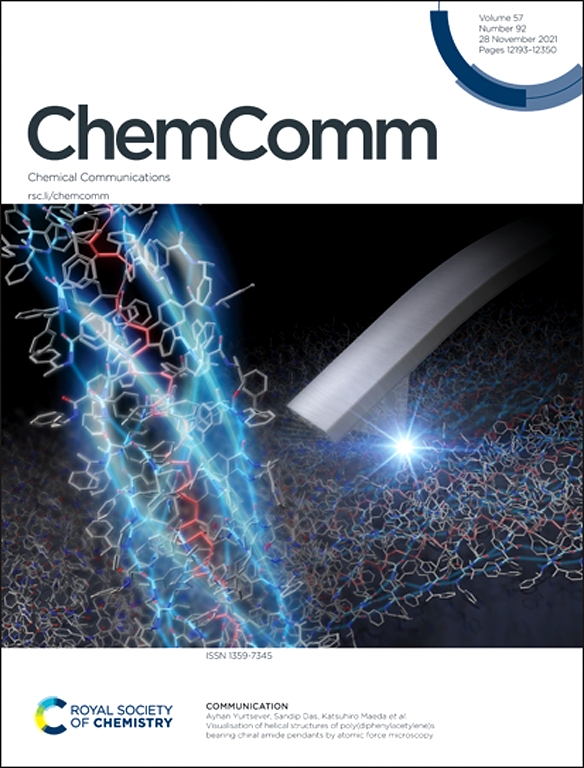配位笼催化新见解
IF 4.2
2区 化学
Q2 CHEMISTRY, MULTIDISCIPLINARY
引用次数: 0
摘要
这篇视角综述文章总结了作者课题组在 2018 - 2024 年(大致)期间利用配位笼进行催化的工作。讨论的最新见解包括:(i) 催化的一般机制,其中涉及利用涉及笼腔(中性疏水底物)和表面(基于阴离子的反应组分)的正交相互作用将反应伙伴共定位;(ii) 笼外表面在某些情况下促进催化的作用;(iii) 阴离子与保持架表面结合的定量分析,作为对空腔内中性客体结合常数测量的补充;(iv) 使用活性氧的新型氧化还原催化,活性氧是由氧化剂(如 H2O2 和 HSO5-)与保持架上层结构中的钴(II)/钴(III)氧化还原偶合反应生成的。总之,所讨论的结果为进一步探索利用超分子组装体进行催化提供了重要的新可能性。本文章由计算机程序翻译,如有差异,请以英文原文为准。

New insights into coordination-cage based catalysis
This review article summarises work from the author's group on catalysis using coordination cages over the (approximate) period 2018–2024. Recent insights discussed include (i) the general mechanism of catalysis, which involves co-location of reaction partners using orthogonal interactions involving the cage cavity (neutral hydrophobic substrates) and the surface anion-based reaction partners; (ii) the role of the cage exterior surface in facilitating catalysis in some cases; (iii) quantitative analysis of anion-binding to the cage surface, as a complement to measurement of binding constants of neutral guests inside the cavity; (iv) a new type of redox-based catalysis using reactive oxygen species, which are generated by reaction of oxidants such as H2O2 and HSO5− with Co(ii)/Co(iii) redox couples in the cage superstructure. Collectively the results discussed provide signficant new possibilities for further exploration of catalysis using supramolecular assemblies.
求助全文
通过发布文献求助,成功后即可免费获取论文全文。
去求助
来源期刊

Chemical Communications
化学-化学综合
CiteScore
8.60
自引率
4.10%
发文量
2705
审稿时长
1.4 months
期刊介绍:
ChemComm (Chemical Communications) is renowned as the fastest publisher of articles providing information on new avenues of research, drawn from all the world''s major areas of chemical research.
 求助内容:
求助内容: 应助结果提醒方式:
应助结果提醒方式:


